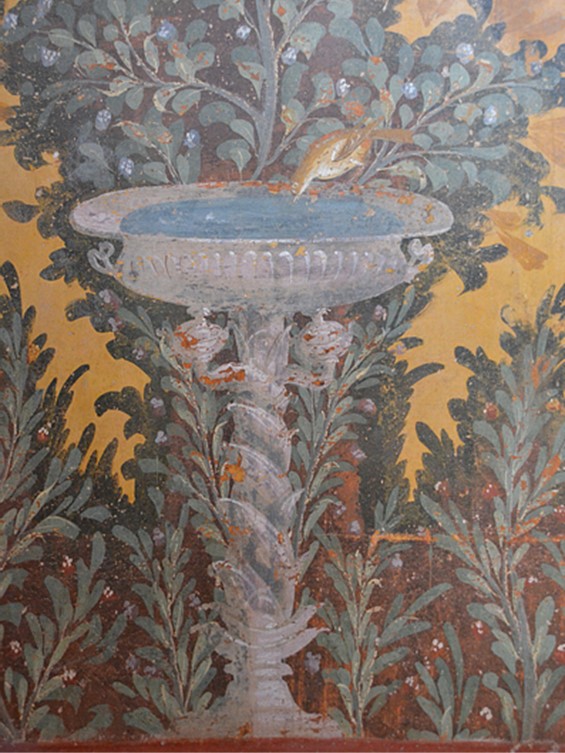
Photo credit: Carole Raddato published on 06 May 2020
https://www.ancient.eu/article/1552/a-visitors-guide-to-oplontis-stabiae–boscoreale/
I wish I were standing in the middle of Villa Poppaea’s central sitting room (Room 18 on the plan), gazing at “the portico in front of the swimming pool and its surrounding garden… the large window (behind me, that opens) onto the principal garden of the villa… (more) windows, (on my sides) opening into rooms richly-painted with garden scenes, and (further beyond those) into tiny ‘garden’ courtyards, again decorated with garden frescos. Trees, greenery, flowers, birds and water (are) visible in every direction, both painted and real, with nature being brought into the interiors. …It’s hard not to imagine the building filled with …peace, …accompanied by the twittering of birds and the wind in the grass and leaves.” Villa Poppaea Viridarium Frescoes have a strange effect on me! https://www.italyheaven.co.uk/campania/villa-oplontis.html
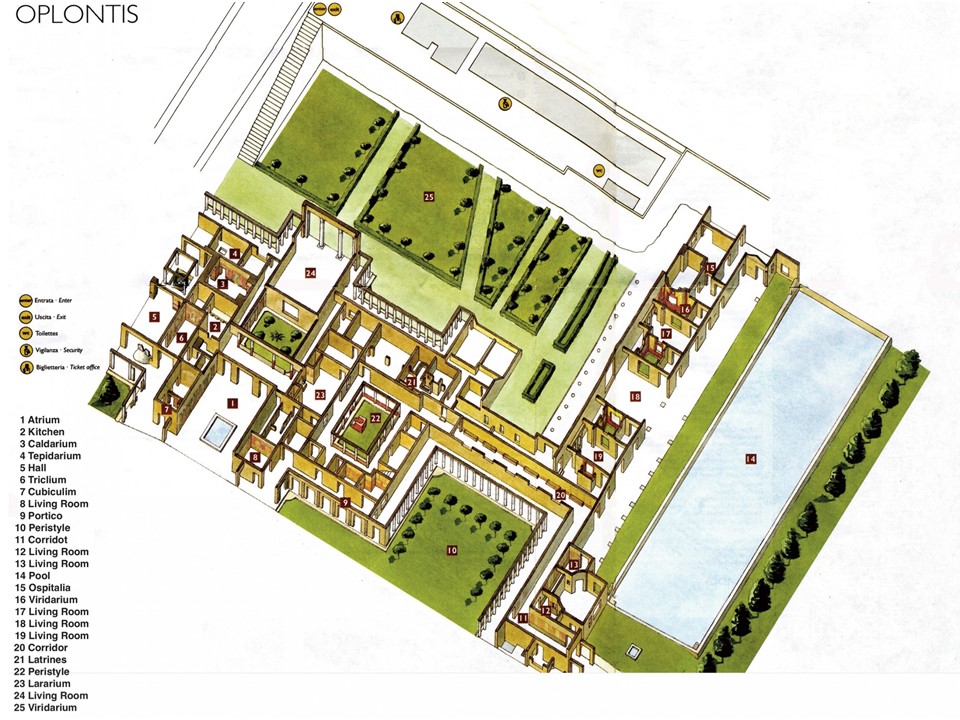
Villa Poppaea, built on a plateau fourteen meters above sea level, took advantage of all the scenic pleasures of the Bay of Naples, the latest trends in architecture and the art of fresco painting. Rooms, one hundred of them, were in such a way organized so that its residents and their guests would be able to enjoy the open air and the dramatic view of the sea in an environment of the utmost luxury. Walls decorated with sumptuous frescos further enhanced the effect this Villa probably had on its residents and visitors. Please allow me to explain why exploring the fresco decoration in just one Room in Villa Poppaea, makes your trip to Oplontis, worth your time…
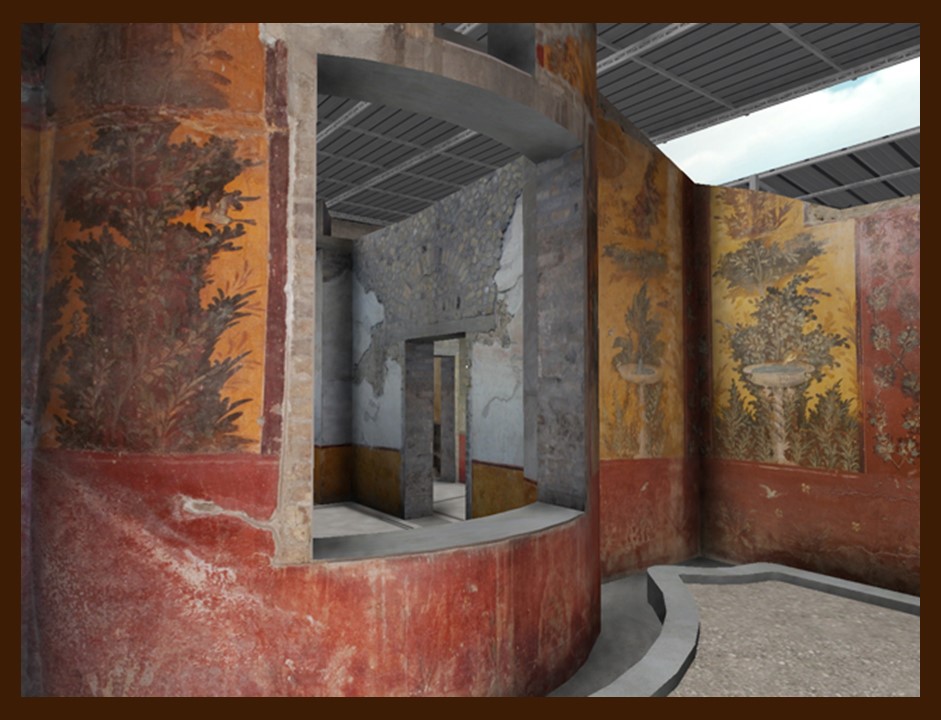
Photo Credit: © King’s College London, 2011
https://www.kvl.cch.kcl.ac.uk/oplontis03.html
Back in the late 19th century, the German archaeologist August Mau (1840–1909), delineated and described a system of dividing Pompeian Frescoes into four distinct Styles. It is amazing how in Villa Poppaea visitors can see fine examples of the latter three of these four Fresco Styles by just walking from room to room. The amazing frescoes in the small Viridarium area (Room 16 in our Villa Plan) of Villa Poppaea are incredible!
The Viridarium is described as an indoor garden sitting room, decorated with frescoes depicting plants and birds. Room 16 in our Villa Plan is one such Viridarium beautifully embellished with what scholars describe as “Garden Painting,” a very precise genre that is distinct from landscape painting. Garden Paintings give viewers an interesting glimpse of the relationship that existed between architecture and landscape in the ancient world. Exploring the frescoes of Villa Poppaea I read OPLONTIS: VILLA A (“OF POPPAEA”) AT TORRE ANNUNZIATA, ITALY by John R. Clarke and Nayla K. Muntasser, and particularly Chapter 6: Wilhelmina Jashemski and Garden Archaeology at Oplontis, by Kathryn Gleason. The information provided in this presentation is the result of an enjoyable weekend of seeking more and more data… https://quod.lib.umich.edu/cgi/t/text/text-idx?cc=acls;c=acls;idno=heb90048.0001.001;node=heb90048.0001.001:21.7.2;rgn=div1;view=text
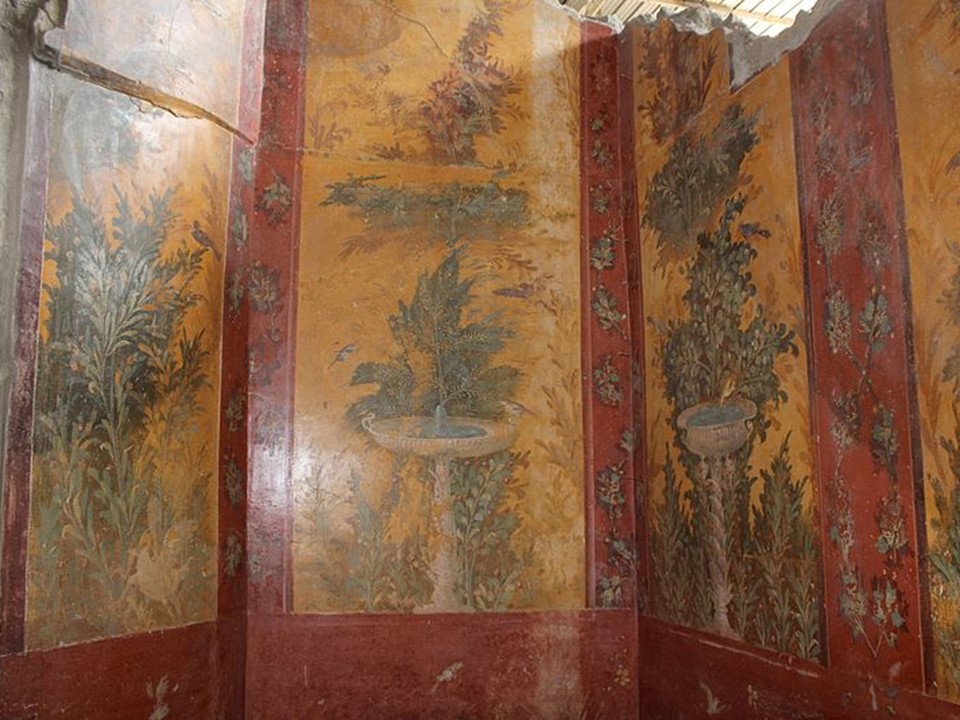
https://commons.wikimedia.org/wiki/File:Viridaria_Villa_Poppaea_30.JPG
The delightful frescoes in Room 16, the Villa’s Viridarium, display arrangements of evergreen foliage of arbutus, laurels and branches of roses, artfully shaped alone or around a decorative fountain. Hues of red and yellow, powerful primary colours, serve as a striking background. Birds twittering and drinking water from the fountains give an extra sense of joyful life. Kathryn Gleason describes them as Topiarii and continues presenting Ars Topiaria, as the art of creating displays of foliage and shrubs by clipping plants, the pruning and dwarfing of large trees… to the training of ivy into ornate patterns in small peristyle gardens. https://quod.lib.umich.edu/cgi/t/text/text-idx?cc=acls;c=acls;idno=heb90048.0001.001;node=heb90048.0001.001:21.7.2;rgn=div1;view=text
I found of particular interest the site of The Oplontis Project, a collaboration of John R. Clarke and Michael L. Thomas of the University of Texas at Austin and the Soprintendenza Speciale per i Beni Archeologici di Napoli e Pompe, along with the Visual Restorations of King’s Visualisation Lab, in the Department of Digital Humanities at King’s College London, by Martin Blazeby. http://www.oplontisproject.org/ and http://www.oplontisproject.org/index.php/visualization/
For a PowerPoint on Villa Poppaea Viridarium Frescoes, please… Click HERE!
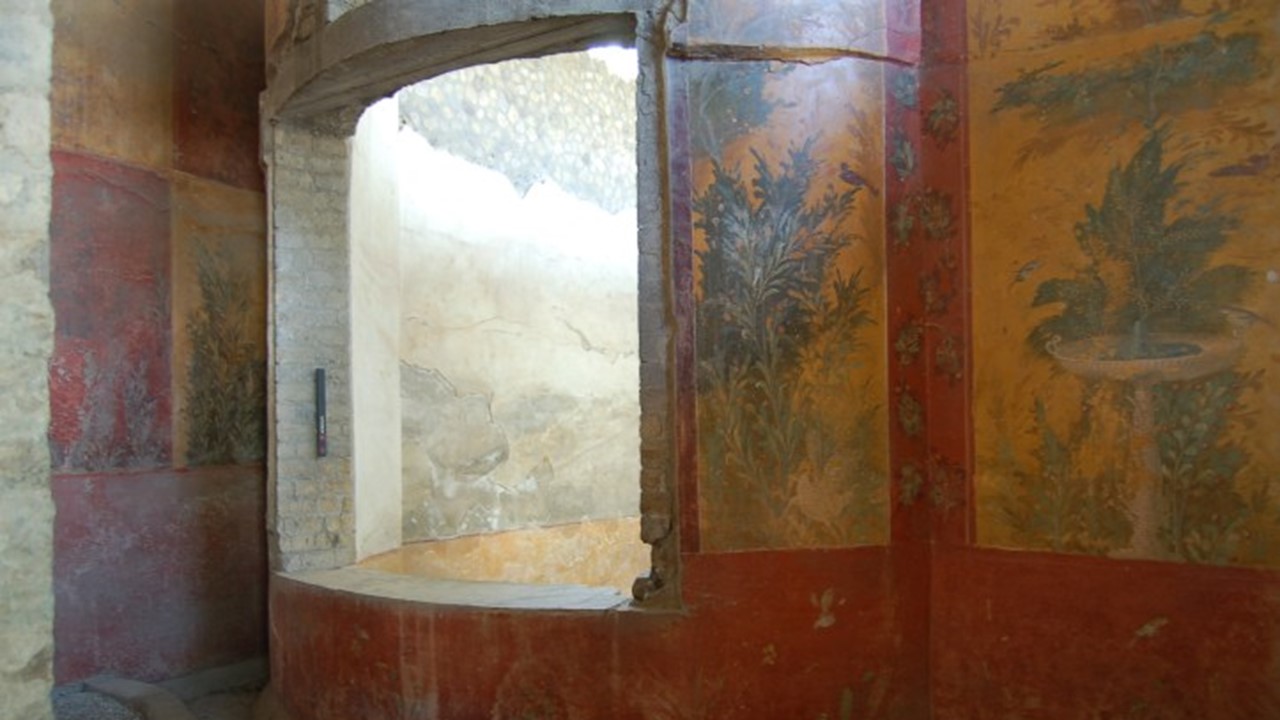
https://historyandarchaeologyonline.com/ancient-roman-gardens/